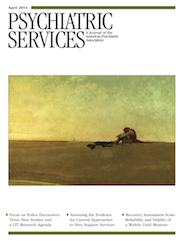Well-Being Among Persons at Risk of Psychosis: The Role of Self-Labeling, Shame, and Stigma Stress
Abstract
Objective
When young people at risk of psychosis experience early signs of the disorder or early intervention, they may label themselves as “mentally ill.” However, empirical data related to the potentially harmful effects of self-labeling and stigma among young people at risk of psychosis are lacking. This study used a stress-coping model to examine mechanisms by which stigma may exert an impact on young people at risk of psychosis.
Methods
The authors assessed self-reports of perceived public stigma, shame about having a mental illness, self-labeling, and the cognitive appraisal of stigma as a stressor (stigma stress) as predictors of well-being among 172 residents of Zürich, Switzerland, who were between 13 and 35 years old. All participants were at high risk or ultra-high risk of psychosis or at risk of bipolar disorder. Psychiatric symptoms were assessed by the Positive and Negative Syndrome Scale, and well-being was measured by instruments that assessed quality of life, self-esteem, and self-efficacy.
Results
Perceived public stigma, shame, and self-labeling were independently associated with increased stigma stress. More stigma stress, in turn, predicted reduced well-being, independent of age, gender, symptoms, and psychiatric comorbidity. Stigma stress partly mediated the effects of perceived public stigma, shame, and self-labeling on well-being.
Conclusions
Perceived public stigma, shame, and self-labeling appear to be associated with stigma stress and reduced well-being among young people at risk of psychosis. With early intervention programs gaining traction worldwide, effective strategies to address the shame and stigma associated with at-risk states and early psychosis are needed.



